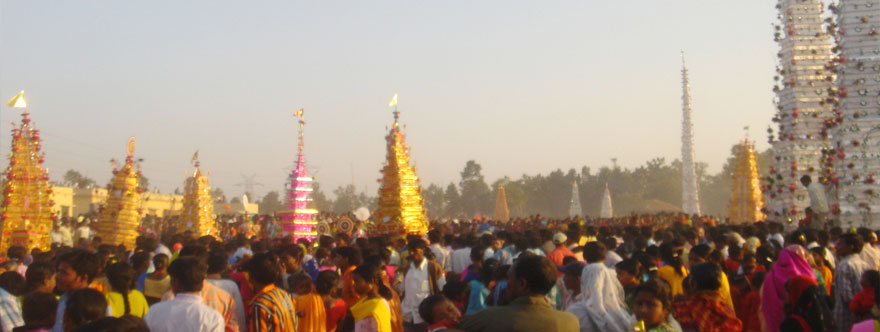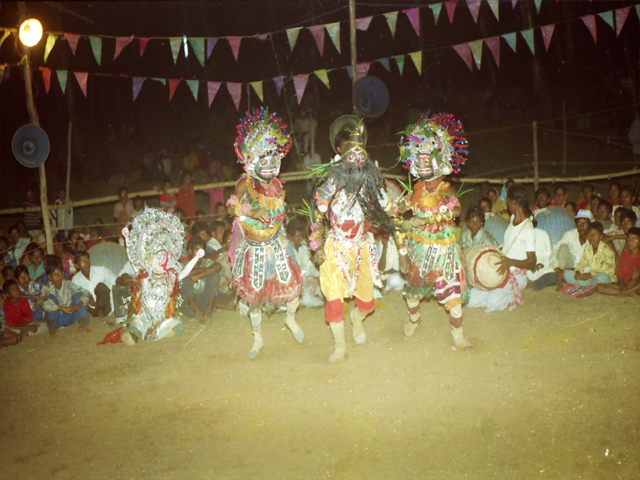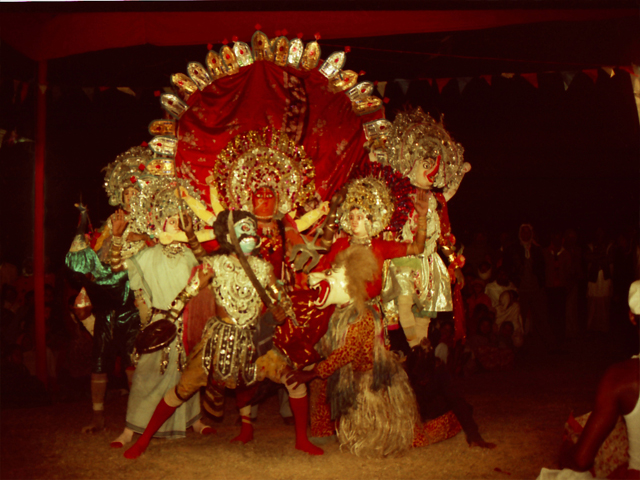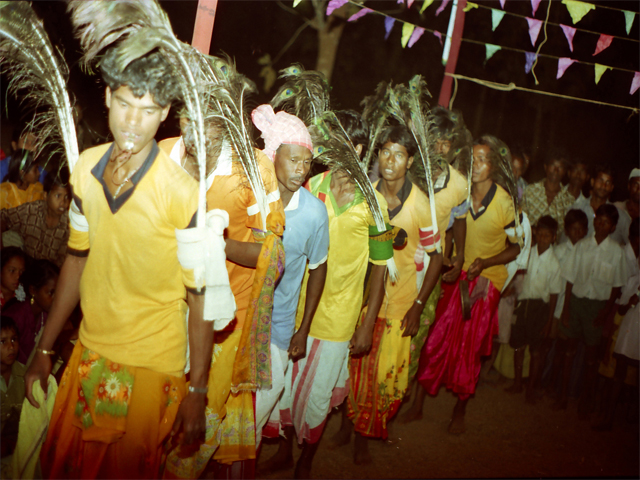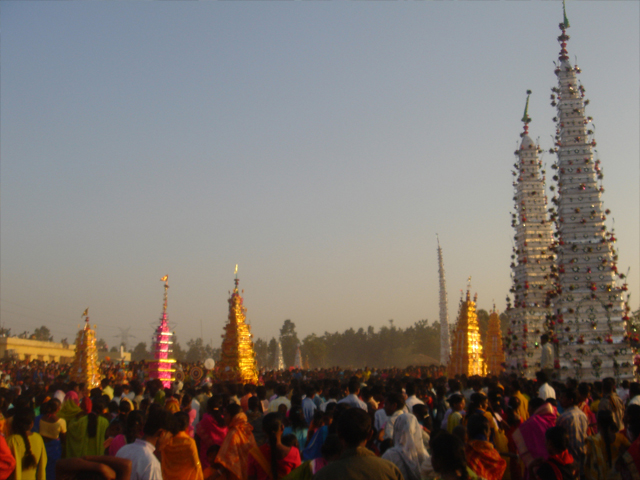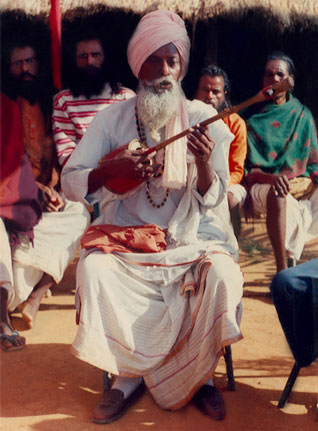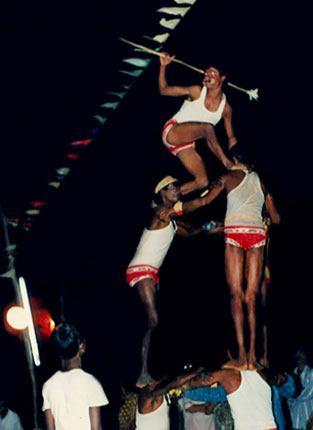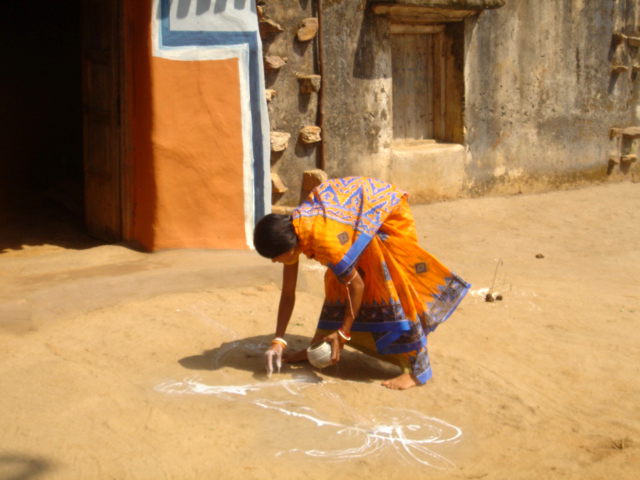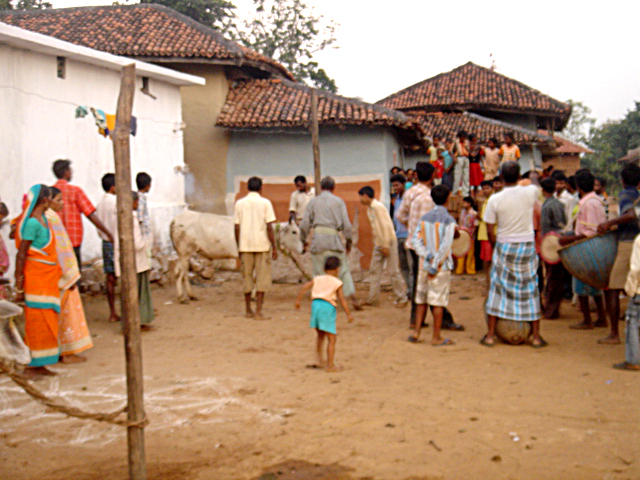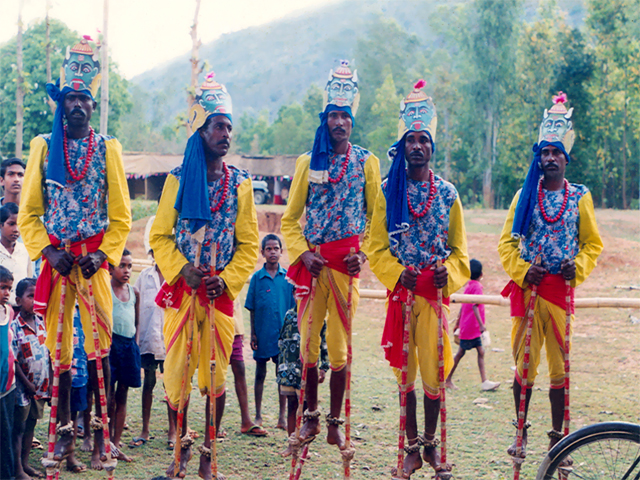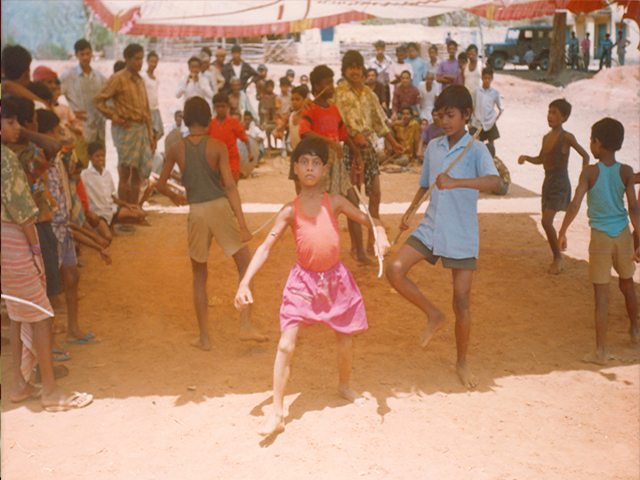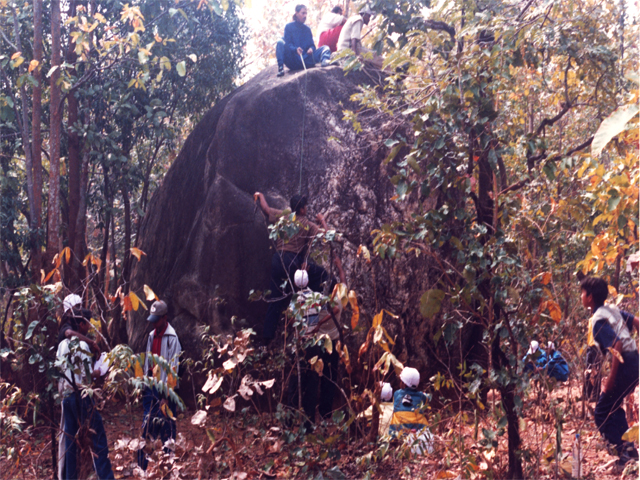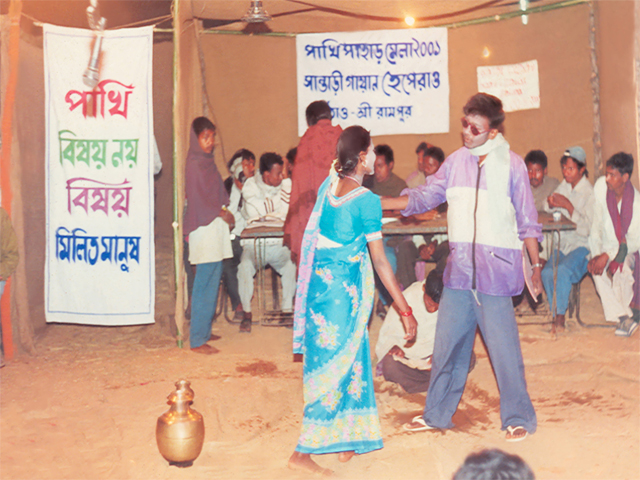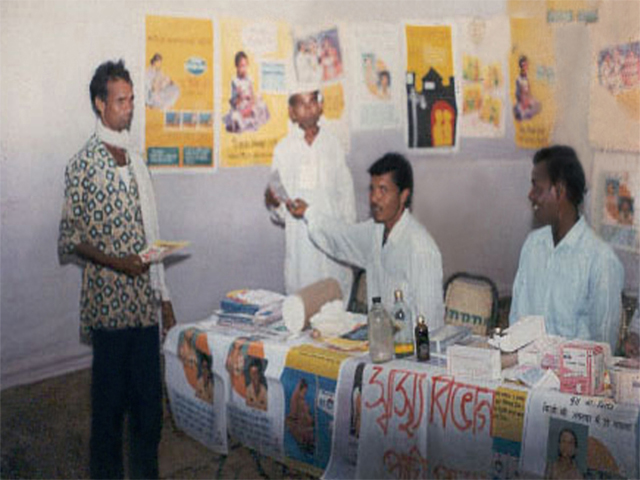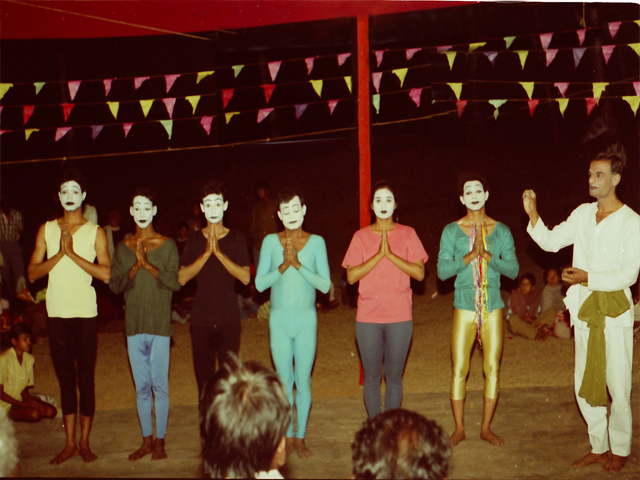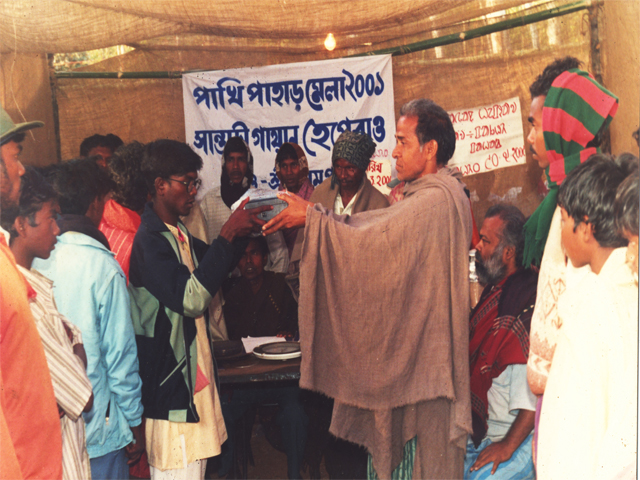Though Purulia appears to be very rough and rugged from the outside, at least from its
terrain structure, it is very lively from within. Its people, customs and festivals are a
veritable feast of life. Because of their living in sylvan surroundings and their intimate
relation with forests and groves the tribal festivals and religion rest heavily on seasonal
manifestation of nature. From March to May Chait Parab, Charak Puja, Shiber Gajan,
Chhau and Natua Parab bring in mirth in the lives of the locals. Chhau is the most
interesting mask-dance, performed as a theatrical art; performers are all males, dressed
with very elaborate masks and gorgeous headgears; the music and songs are based on
mythology and contemporary themes and they require the dancers to do leaps in the air,
summersaults, and twirls again and again.
By the end of May
cultivators sow seeds and celebrate the practice, mostly with songs and dances. During
June-July Santhals also go for sowing seeds. Manasa Pooja (worship the goddess of
snake) in the middle of August, is a big festival for the locals. And in September Bhadu, a
festival related to Aus paddy harvesting is an occasion of great joy for Bauris and Bagdis.
Mostly in the month of October, on the occasion of Durga puja, the locals celebrates
Dashai dance, spanning for a month and it ends the last day of Durga puja. Badhna
(celebrated during Kali puja) is a festival when the villagers decorate their huts with
interesting designs on walls and floors using a liquid in white colour only, made of natural
ingredients. The decoration process itself is a treat to watch. All the designs are created
with typically adept finger movements, an exercise not seen elsewhere. A part of this
ritual is to irritate cows by playing drums etc. for a fight.
Tushu is a festival that involves
songs with processions by different groups which carry colourful high Jhapis, towers
made of paper and cloth. From the middle of January to February the festival of
Bhansingh Pooja-O-Parab continues. Bhansingh, a god who doesn't have an image, is
one who protects cattle. Spring festival for Santhals is known as Sarjan Baha. Mundas call
it Sarhool; it's a nightlong festival involving song and dance. Bhejabindha and Murga
Larai witness, archery and cock fight respectively. The defeated cock become the
property of the owner of the wining cock. These competitive sports are highly popular
among Santhals. In the month of May the Santhals of Ajodhya Hills area having their
hunting festival, coinciding with the Buddha Purnima, it's also known as Shikar Parab.
The Foundation in its turn has added a few festivals of its own that are held in regular
intervals. It involves the local people in great numbers. Alongside various indigenous art
forms traditionally practised by the local people in Purulia, a urban art form like mime has
been introduced, performed and workshops have been held for local performers also.
The Foundation also organised Nature Study and Rock Climbing Camp from 1999 to 2004
during November to March. Pakhipahar Mela, a fair that witnesses participation of local in
thousands, has been a regular event from 1999 to 2004, showcasing local art forms like
Chhou, Natua, Dashai, Santhali Darma, Raibese, Ranpa, Choir, Bengali folk and modern
songs from outside Purulia. The training workshop organized by the Foundation for Chhau
and Natua was a huge success for it witnessed enthusiastic participation of the local people.
The darma competition organized by the Foundation promoted local art forms.
